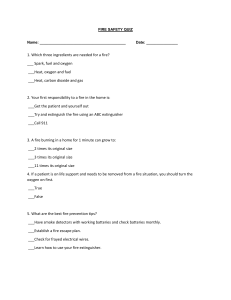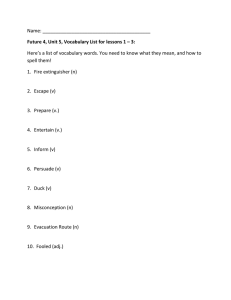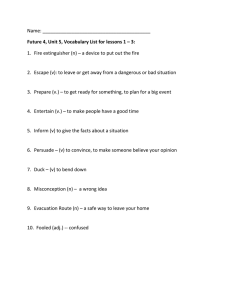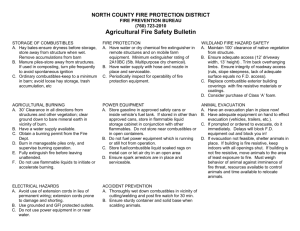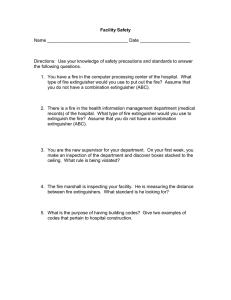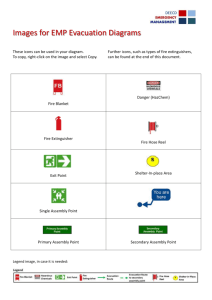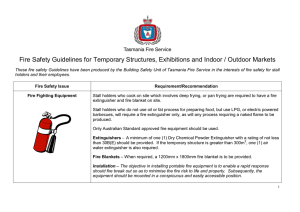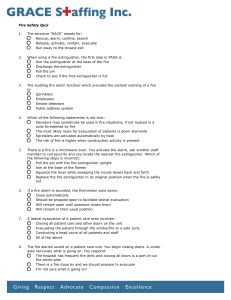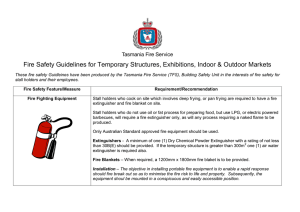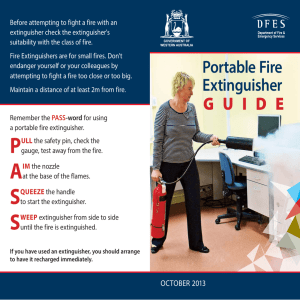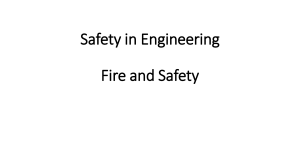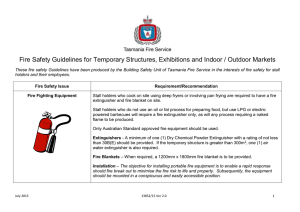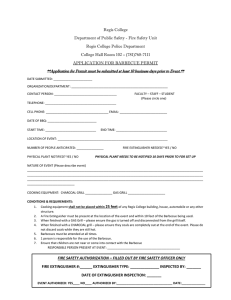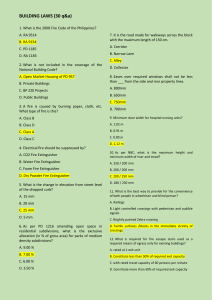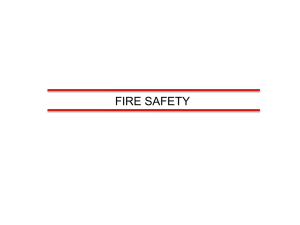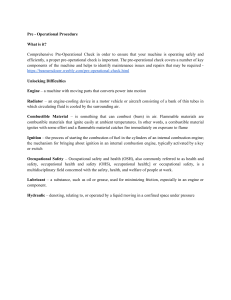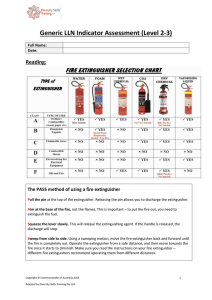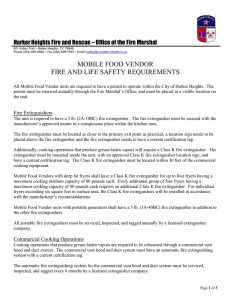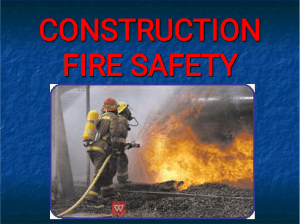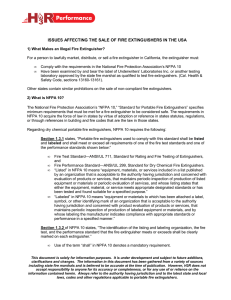FIRE SAFETY Tips For Our Facility
advertisement
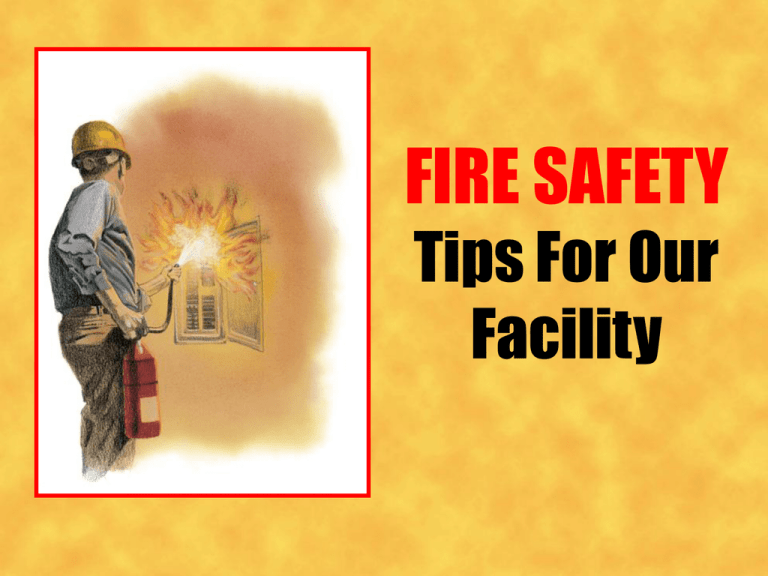
FIRE SAFETY Tips For Our Facility Elements Of Fire Fire is a chemical reaction involving rapid oxidation or burning of a fuel. It needs four elements to occur: * Fuel * Oxygen * Heat * Chemical reaction. Take away any one of these factors, and the fire cannot exist! October Is National Fire Prevention Month Classes Of Fire Fires are classified according to the types of objects being burned: Class A – ordinary combustibles such as wood, paper, cloth, rubber or certain types of plastic Class B – flammable or combustible gases and liquids such as gasoline, kerosene, paint, paint thinners or propane Class C – energized electrical equipment such as appliances, switches or power tools Class D – certain combustible metals such as magnesium, titanium, potassium or sodium. Fire Extinguishers The faceplate of every fire extinguisher shows the class or classes of fire it is designed to fight. To properly use a fire extinguisher, follow the P-A-S-S procedure: P S A S P Pull the pin A Aim the extinguisher’s hose or nozzle at the bottom of the fire S Squeeze the trigger S Sweep it slowly back and forth, covering the entire fire with the extinguishing substance. October Is National Fire Prevention Month What To Do If Fire Occurs Prepare yourself in advance! Take a moment to review what to do in the event of an emergency. This could include: * How to notify the fire department * Evacuation procedures * Designated persons in charge of evacuation October Is National Fire Prevention Month
